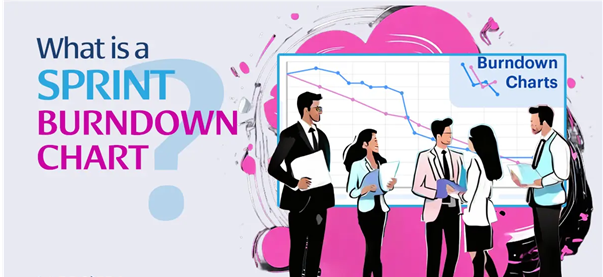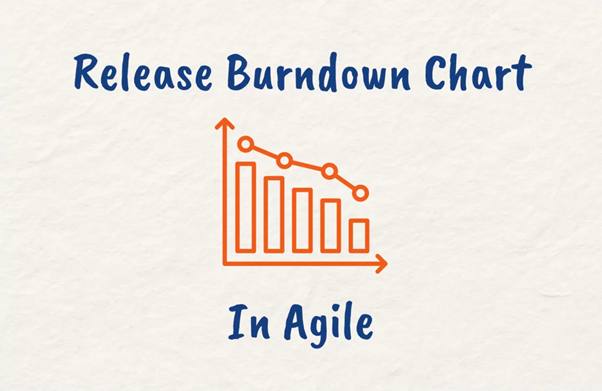Essential Agile Metrics for Tracking Team Success
Essential Agile Metrics for Tracking Team Success

Agile development is all about continuous improvement, and to measure that, you need the right metrics. Tracking these metrics provides valuable insights into your team's performance, productivity, and progress towards your goals. Let’s explore nine essential Agile metrics to help you gauge success and improve your processes.
Velocity: Measuring Work Completed
What is Velocity? Velocity is the amount of work your team can complete during a sprint. It's measured by adding up the total story points completed in a sprint. This metric helps you predict future work and set realistic goals.
Why It Matters Velocity gives a clear picture of your team's capacity. Over time, it helps in making accurate forecasts, managing stakeholder expectations, and improving sprint planning.

Sprint Burndown: Monitoring Progress
What is Sprint Burndown? The sprint burndown chart shows the amount of work remaining in a sprint, plotted against time. Ideally, the chart should slope downwards as tasks are completed, leading to zero work remaining by the end of the sprint.
Why It Matters This metric provides visibility into the team's progress and highlights potential bottlenecks early on, allowing you to adjust course before the sprint ends.

Epic and Release Burndown: Tracking Large-Scale Progress
What is Epic and Release Burndown? Epic and release burndown charts are similar to sprint burndown but focus on larger timeframes, like an entire epic or a project release.
Why It Matters These charts help in tracking long-term project goals, ensuring that work is on track for larger initiatives. It keeps stakeholders informed and aligned with project timelines.
Lead Time: Understanding Workflow Efficiency
What is Lead Time? Lead time measures the total time taken from when a task is created to when it’s completed. It includes all stages of the workflow, from initial planning to final delivery.
Why It Matters Lead time reveals how quickly your team can deliver value to the customer. Reducing lead time is key to enhancing responsiveness and efficiency.

Cycle Time: Focusing on Active Work
What is Cycle Time Cycle time measures the time taken from when work starts on a task to its completion. It excludes waiting time before the task is picked up.
Why It Matters Cycle time focuses on the efficiency of the development processitself. Reducing cycle time helps speed up work and improve productivity.
Throughput: Measuring Output
What is Throughput? Throughput measures the number of tasks completed in a specific period, often over a sprint. It focuses on how much work your team delivers regularly.
Why It Matters Tracking throughput helps you assess consistency in delivery, identify patterns in team performance, and set achievable goals for the future.
Cumulative Flow Diagram: Visualizing Workflow
What is a Cumulative Flow Diagram? A cumulative flow diagram (CFD) visualizes work in different stages (e.g., backlog, in progress, completed) over time. It provides a clear picture of how tasks flow through your team's pipeline.
Why It Matters The CFD helps identify bottlenecks and inefficiencies in your workflow. A smooth flow suggests the process is working well, while a growing queue indicates issues that need to be addressed.
Work in Progress (WIP): Balancing Task Load
What is WIP?WIP tracks the number of tasks currently being worked on by your team at any given moment. This metric is critical in managing the workload and avoiding over-committing.
Why It MattersLimiting WIP helps maintain focus and productivity. It encourages teams to complete tasks before taking on new ones, preventing burnout and ensuring high-quality work.
Escaped Defects: Monitoring Quality
What are Escaped Defects? Escaped defects are bugs or issues that make it to production. This metric tracks how many defects are found after a release, indicating potential gaps in the testing process.
Why It Matters Tracking escaped defects helps you improve quality control and testing processes, reducing the number of post-release issues and improving customer satisfaction.
Conclusion: The Value of Agile Metrics
Agile metrics provide powerful insights into your team’s performance and productivity. By focusing on these nine key metrics—velocity, sprint and release burndown, lead time, cycle time, throughput, cumulative flow, WIP, and escaped defects—you can better manage your projects, predict outcomes, and continuously improve your processes. The key is to use these metrics as a guide for improvement, not as rigid targets, ensuring that your team remains adaptive and responsive to change.



